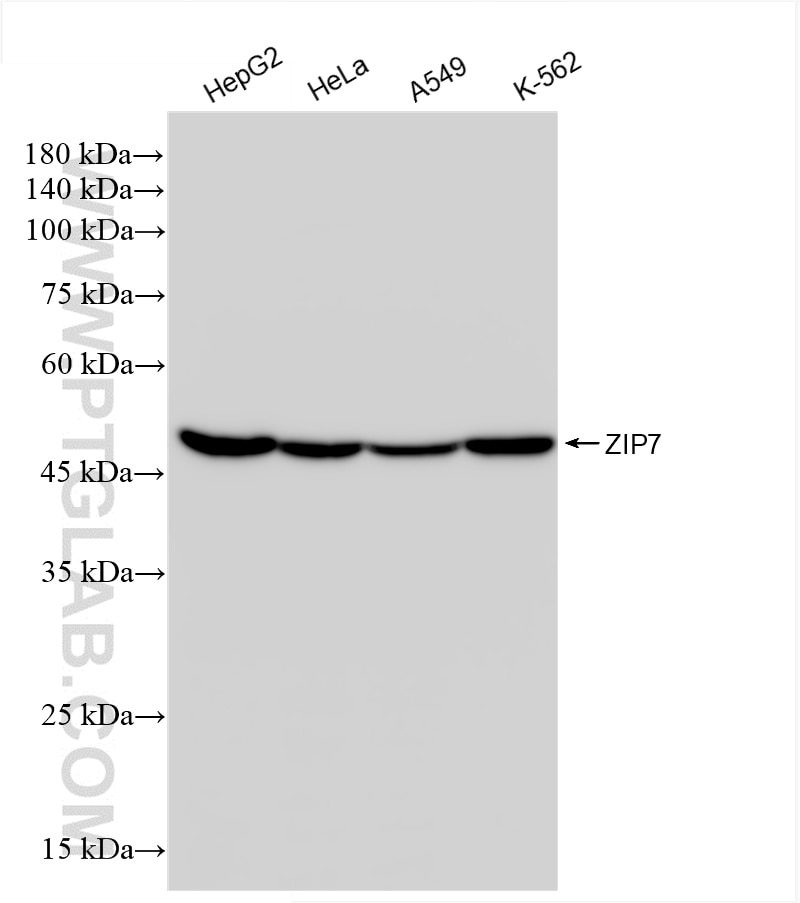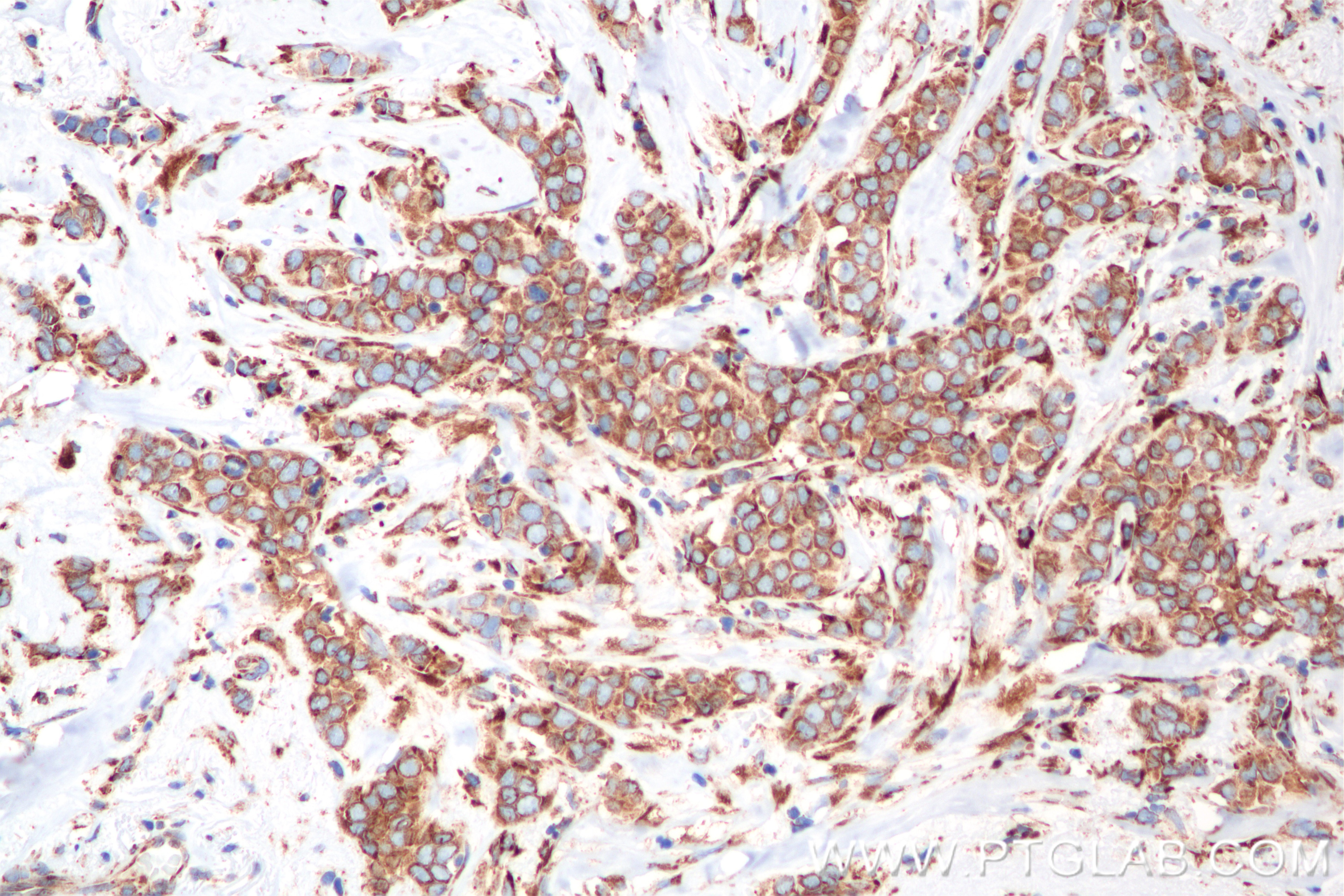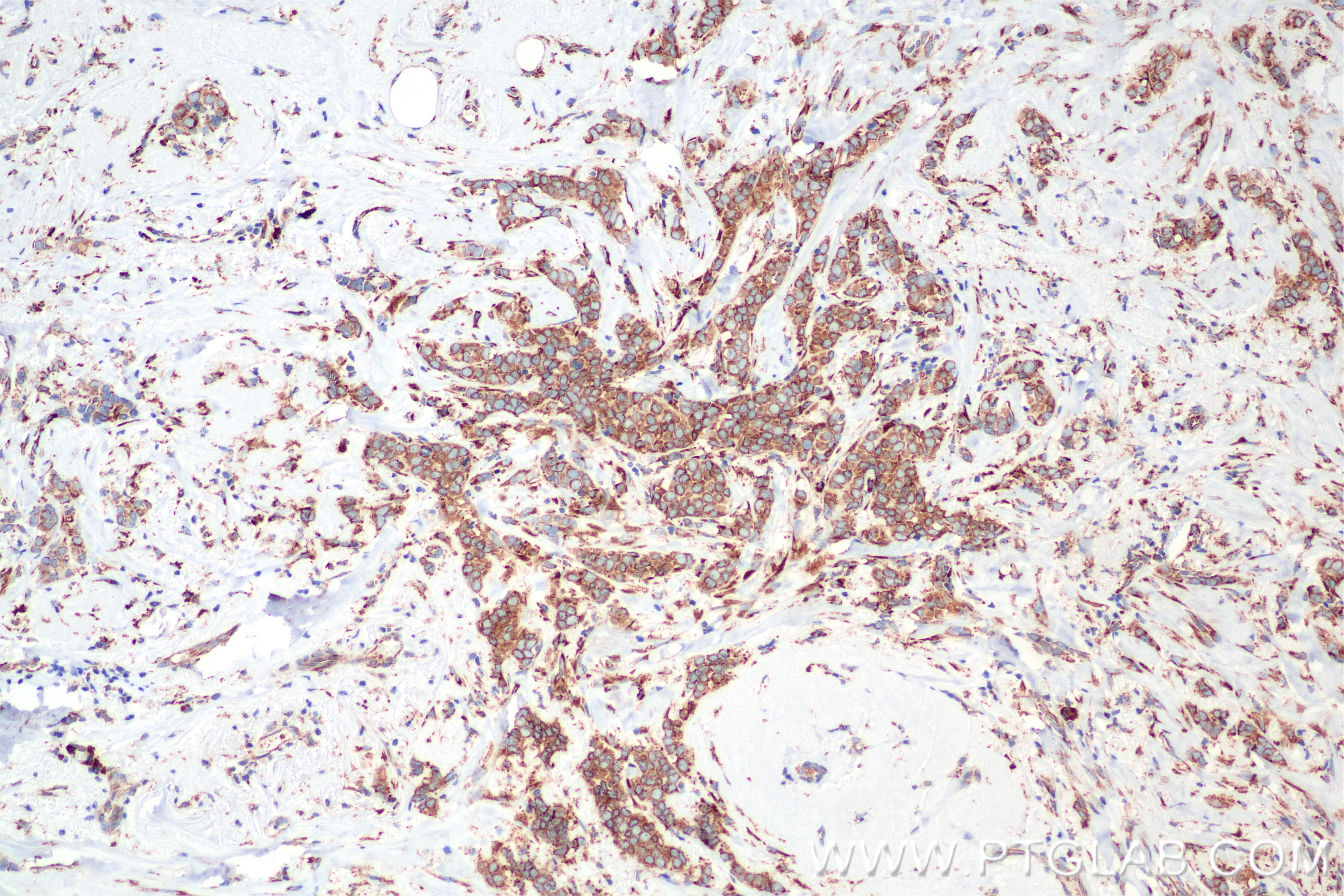Tested Applications
| Positive WB detected in | HepG2 cells, HeLa cells, A549 cells, K-562 cells |
| Positive IHC detected in | human breast cancer tissue Note: suggested antigen retrieval with TE buffer pH 9.0; (*) Alternatively, antigen retrieval may be performed with citrate buffer pH 6.0 |
Recommended dilution
| Application | Dilution |
|---|---|
| Western Blot (WB) | WB : 1:2000-1:10000 |
| Immunohistochemistry (IHC) | IHC : 1:200-1:800 |
| It is recommended that this reagent should be titrated in each testing system to obtain optimal results. | |
| Sample-dependent, Check data in validation data gallery. | |
Product Information
85383-1-RR targets ZIP7 in WB, IHC, ELISA applications and shows reactivity with human samples.
| Tested Reactivity | human |
| Host / Isotype | Rabbit / IgG |
| Class | Recombinant |
| Type | Antibody |
| Immunogen |
CatNo: Ag13798 Product name: Recombinant human SLC39A7 protein Source: e coli.-derived, PET28a Tag: 6*His Domain: 237-384 aa of BC000645 Sequence: VRHVKGGHGHSHGHGHAHSHTRGSHGHGRQERSTKEKQSSEEEEKETRGVQKRRGGSTVPKDGPVRPQNAEEEKRGLDLRVSGYLNLAADLAHNFTDGLAIGASFRGGRGLGILTTMTVLLHEVPHEVGDFAILVQSGCSKKQAMRLQ Predict reactive species |
| Full Name | solute carrier family 39 (zinc transporter), member 7 |
| Calculated Molecular Weight | 469 aa, 50 kDa |
| Observed Molecular Weight | 45-50 kDa, 56 kDa |
| GenBank Accession Number | BC000645 |
| Gene Symbol | ZIP7 |
| Gene ID (NCBI) | 7922 |
| Conjugate | Unconjugated |
| Form | Liquid |
| Purification Method | Protein A purification |
| UNIPROT ID | Q92504 |
| Storage Buffer | PBS with 0.02% sodium azide and 50% glycerol, pH 7.3. |
| Storage Conditions | Store at -20°C. Stable for one year after shipment. Aliquoting is unnecessary for -20oC storage. 20ul sizes contain 0.1% BSA. |
Background Information
ZIP7, also known as SLC39A7, is a member of the SLC39 family of zinc transporters. It is a transmembrane protein primarily localized to the endoplasmic reticulum (ER) and is involved in the transport of zinc ions from the ER and Golgi apparatus to the cytoplasm. This process is crucial for maintaining zinc homeostasis within the cell and regulating various signaling pathways.
Protocols
| Product Specific Protocols | |
|---|---|
| WB protocol for ZIP7 antibody 85383-1-RR | Download protocol |
| Standard Protocols | |
|---|---|
| Click here to view our Standard Protocols |








